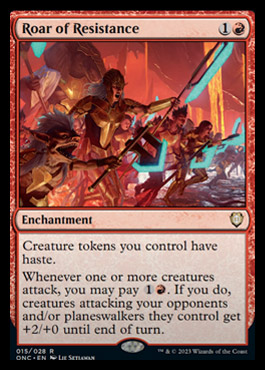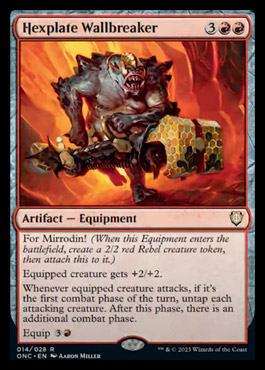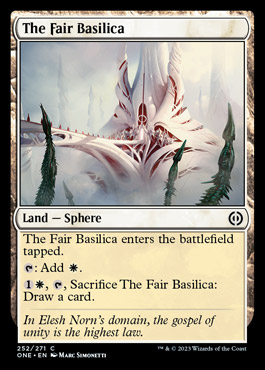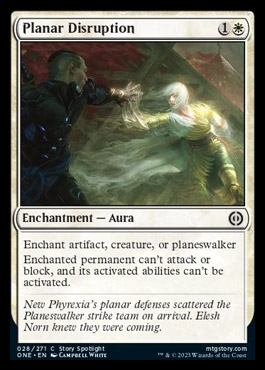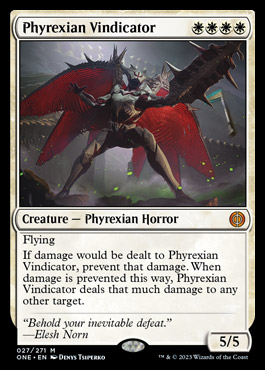Fundamentally there are two relevant resources in magic, that of mana and cards. Life is certainly a resource of sorts and many cards allow you to spend it like the others but without those cards life is more the objective than a resource, you are spending your cards and mana so as to take away all of the opponents life. With that in mind we can structure our thinking and evalutation of cards in terms of cost in mana and in terms of cost in cards. Obviously most cards cost "one cards worth of card" to play! As such it makes rather more sense to consider power in terms relating to cost rather than to the card but you cannot ignore the card cost of cards altogether as we shall see.
The cost of a magic card determines how powerful you expect it to be. The more expensive it is the more powerful it is, fairly simple stuff. There are however several factors that scale differently which affect the power per mana one can expect from a card. The first is the simpler idea of power per card. It would be nice if we could just convert the power one might expect from what a card actually does per mana and see if it adds up and compares to other cards with other similar effects. This would only work in a very boring and linear game. Magic is much more dynamic and so our power per mana scales with a couple of things as the mana cost changes. This means we cannot expect a simple clean relationship up and down the curve of what returns we will get for our mana. A 4 mana card is not twice as good as a two mana one etc. This can make card evaluation not so intuitive.
Power per card scales up the more expensive card gets. To reflect this the power per mana we get goes down. If we take a simple Shock to be the going rate, the balanced benchmark, for both power per mana and card, i.e. 2 damage per 1 mana and 1 card, then why is Lightening Blast a four mana spell and not a two mana spell? Several things go into this. A notable one is simply that Lightning Blast is rather less good of a card than Shock! The main factor however is that power per card. Purely on power per mana the Lightning Blast should cost 2 however both only cost the player one card. To attain four damage the player using Shocks will need to spend another card. Thus, to properly cost up a Lightning Blast you have to pay for the fact that you kind of drew a card over the going rate. Two mana is a not unreasonable rate to cost a card draw at and so the four mana price tag of Lightning Blast seems more reasonable and why the likes of Char have been deemed as good in their time.
There is the coloured mana cost to consider. If Lightning Blast was 2RR to play, or even just RR then you would have a totally dead card until you found a second source of red mana. This is not the case with the pair of Shocks. Yes, certainly you still couldn't kill a 4/4 with a pair of Shocks and a single red source but direct damage is just a small part of it. Perhaps we are talking dorks or card draw or something else where splitting it up does stop it working. Essentially a double of mana cost in colour intensity alone reduces the ability to play the card. We are really just considering total mana costs in this essay although I am sure the reader can appreciate how and why the colour intensity is used as another way to balance cards along this scale. It is worth noting here that the most colour intense cards are typically the cheaper ones with the likes of Counterspell functionally being more colour intense than Cryptic Command.
Just working with total mana let us examine the relationship between power and card cost a bitm ore closely. Lets call power P and mana cost C and the cost of drawing a card to be D then down to just the factor of power per card we can arbitrarily say that when C = P a card is appropriately balanced. Then as we look at more powerful iterations of that card we can assume it retains card to power balance if it lines up with the following progression sequence. Obviously I find it most useful defining C and P with a one drop which is ideal for this aspect of scaling but a little more awkward when we start to consider coverage - which is our other scaling factor.
C = P
2C = 2P + D
3C = 3P + 2D
etc.
As a designer as you increase the power (P) of the card you have to increase the mana cost at a higher rate to account for the increasing value of D, which in this case is representing the pseudo gain in card value as you play more expensive powerful spells over cheaper less powerful ones. Failure to do so would result in things like three mana spells dealing six damage!
So just in terms of power per mana and power per card we should expect to see our power per mana at a maximum on cheapest cards and slowly decrease as you increase in mana cost up the curve. Luckily the other scaling factor works in reverse and leads to an interesting (and changeable) curve of expected power per mana as you move along the mana curve. I have chosen to call this other scaling factor coverage although mostly that is because playability means something else in the magic world.
There are several factors contained within coverage and none are mathematically clean making it all a bit of an approximation. It is also a factor that is determined a lot by the meta and so a card with a low coverage in modern might have a much higher one in standard and be a lot more powerful as a result.
There are a couple of factors contributing to coverage which are more related to convenience and risk. Looking back at out Lightning Blast compared to Shock example there are a few in-game things that are not direct relationships about our assumptions. Two Shocks is a lot better than the Blast and a card draw if you are facing a pair of 2/2 dorks. Equally, my opponent only needs one Blue Elemental Blast to counter my Lightning Blast while they would need two in order to answer my Shocks. This is not always relevant as if the Shocks are being used to kill a 4 toughness dork then the single Counterspell will get the job done but the principle does generally hold true that the more power you imbue in a card the more easily answered the power of that card becomes. You up your risk by upping your power per card while often lowering your convenience.
The main factor in coverage is that convenience I just mentioned. It is simply reducing your ability to play a card early or even at all when you increase your mana cost. A one drop can be played effectively on any turn of the game. A four drop however has to wait until turn four in most cases before it can join the fray. That is three turns of utility lost where the one drop can help and the four drop is a dead card. The higher the mana cost of a card the higher the % of a game it will spend as a dead card in hand offering no utility or options. As this is so meta and context dependant it does not affect cards smoothly as you move up the curve. There is a mana cost in basically all formats that is too much, the meta is too fast and the cards at that price simply do not get enough of a look in to be sufficiently relevant in power level. A card could literally say "you win the game" and it would be unplayable at certain high costs in various metas outside of being something you can cheat the cost on.
The scaling on coverage is fairly severe as well. Each mana cost is more cost than the last. The difference in cost between a 2 drop and a 3 drop on the one hand and a three drop and a four drop on the other would appear to be the same - one, or one turns worth if you will. In practice however the difference between the three and the four drop is the greater difference. This is the case despite being a relatively smaller increase, going from 2 to 3 is a 50% increase while 3 to 4 is only a 33% jump and yet the 33% always feels like more in game, and for good reason. For basically all decks (for the pedants decks with absurd land counts can bypass this but they are not relevant to this discussion) each subsequent land drop becomes less likely to come on curve than the last. A better way to look at this is the average number of turns taken to reach each point on the curve. It takes a little over three turns to hit three to account for those occasional games you miss on your third land drop. For a lot of cube decks a fourth land is most likely to arrive on turn five. You really want to consider the cost of your card in these terms rather than the printed mana value. You might feel like a 6 drop costs twice that of a 3 drop but in reality a five drop is going to be closer to double the three drop in terms of turns taken to becomes playable.
You also need to consider expected game length as this turns to get to X mana is also all based on the premise that the game goes on infinite turns which is entirely untrue! If you are dead on turn 5 you are never getting to six mana. The game ends, often quickly. This means that the higher up the curve a card gets the higher the risk of it never becoming playable in a game is. This is obviously a total disaster, a hinderance of a card. The more powerful the format the faster they tend to be and so the cost of cards you can afford to play at all comes down. Unless I am running heavy ramp or control elements in my cube decks these days I do not include cards over five mana, often capping out at four. This is almost entirely for the reason discussed here - I do not want to be lumbered with a card that offers me nothing all game and thus essentially costs me a card.
There is also all that opportunity cost that is significant with playing more expensive cards. As mentioned, a one drop can be played from turn one. It can also be played most easily alongside other cards. Cheaper cards help you be more mana efficient and curve more smoothly. Rarely is a curve one drop, two drop, three drop, four drop. Often you will not have a good on curve play and in those cases having more cheaper cards really helps, certainly in the early game when mana is the limiting factor and not cards. Cheap cards fill in unused mana around off curve cards or allow you to play double cheap spell instead of curve spell. This is great for mana efficiency and thus tempo. It is also massive for option density. This means that not only do expensive cards have a coverage disadvantage but that cheaper ones have an increased one. Coverage falls of sharply as you go up the curve, far quicker than power is gained through pseudo card gain.
The coverage of these expensive cards is extremely low, with many games not reaching that point at all. These cards are often the most powerful in the game in terms of power per mana as well, even compared to one drops. The D in our equation has become somewhat negligible compared to the lack of coverage and so really top end cards can be balanced such that they have quite immense power, both nominally as you would expect but also per mana. So power per mana is highest at the extremes of the curve, with one drops and their low nominal power compensated with high power per mana, and very high mana cost cards compensated for their low coverage with high power. The cards in the middle have to pay the highest tax on their pseudo card value elements and this causes their power per mana to suffer.
The best decks are those than manage to strike a good balance between maximising overall power within a deck and power per mana, without compromising their coverage (i.e. not just running top end). This is a kind of technical and long winded way of saying the player who spends the most mana wins. If your deck is all top end you deploy nothing, waste your early mana and lose. If you deck is all low end you cast everything too quickly and don't have enough actual power. You build a curve not just so that you spend your mana efficiently and thus deploy as much power as you are able to but also because having a curve of cards helps you maximize your power per mana and nominal power. So, there we have it. The factors that allow for an interesting progression of power per mana as you go up the curve. Hopefully also an explanation as to why there is such a wavy and varied line of scaling with magic card costs that is hard to pin down and hard to evaluate.




